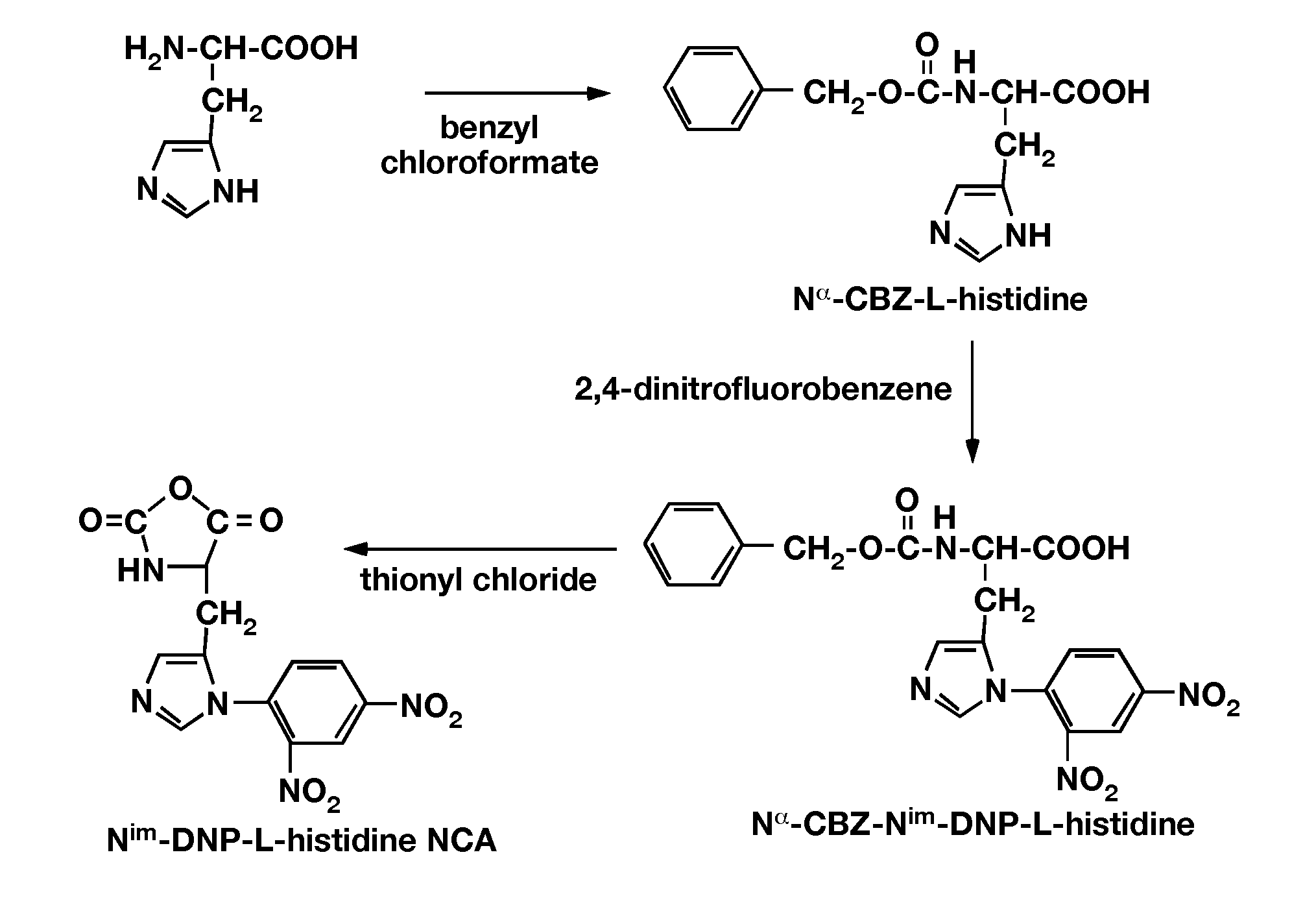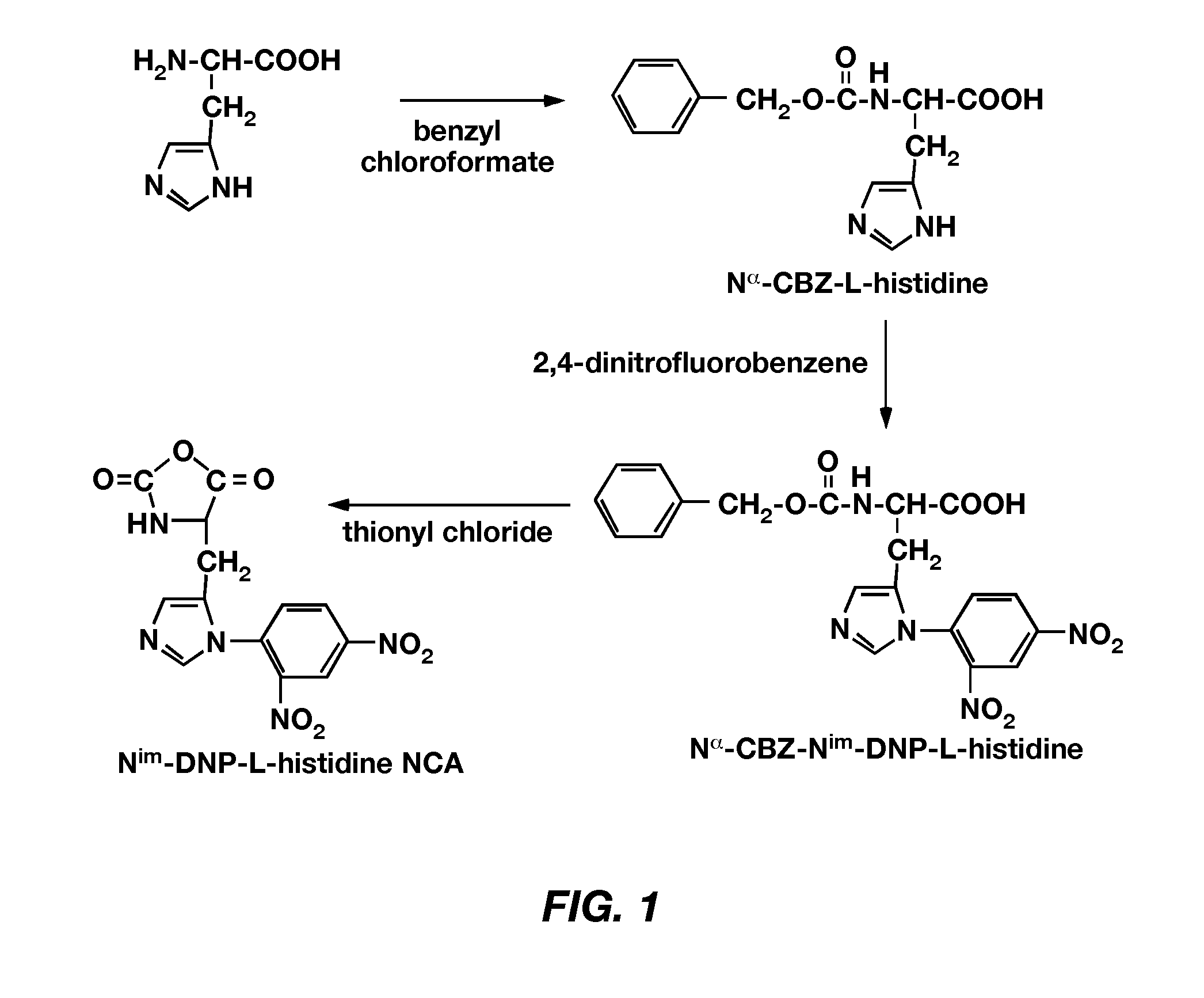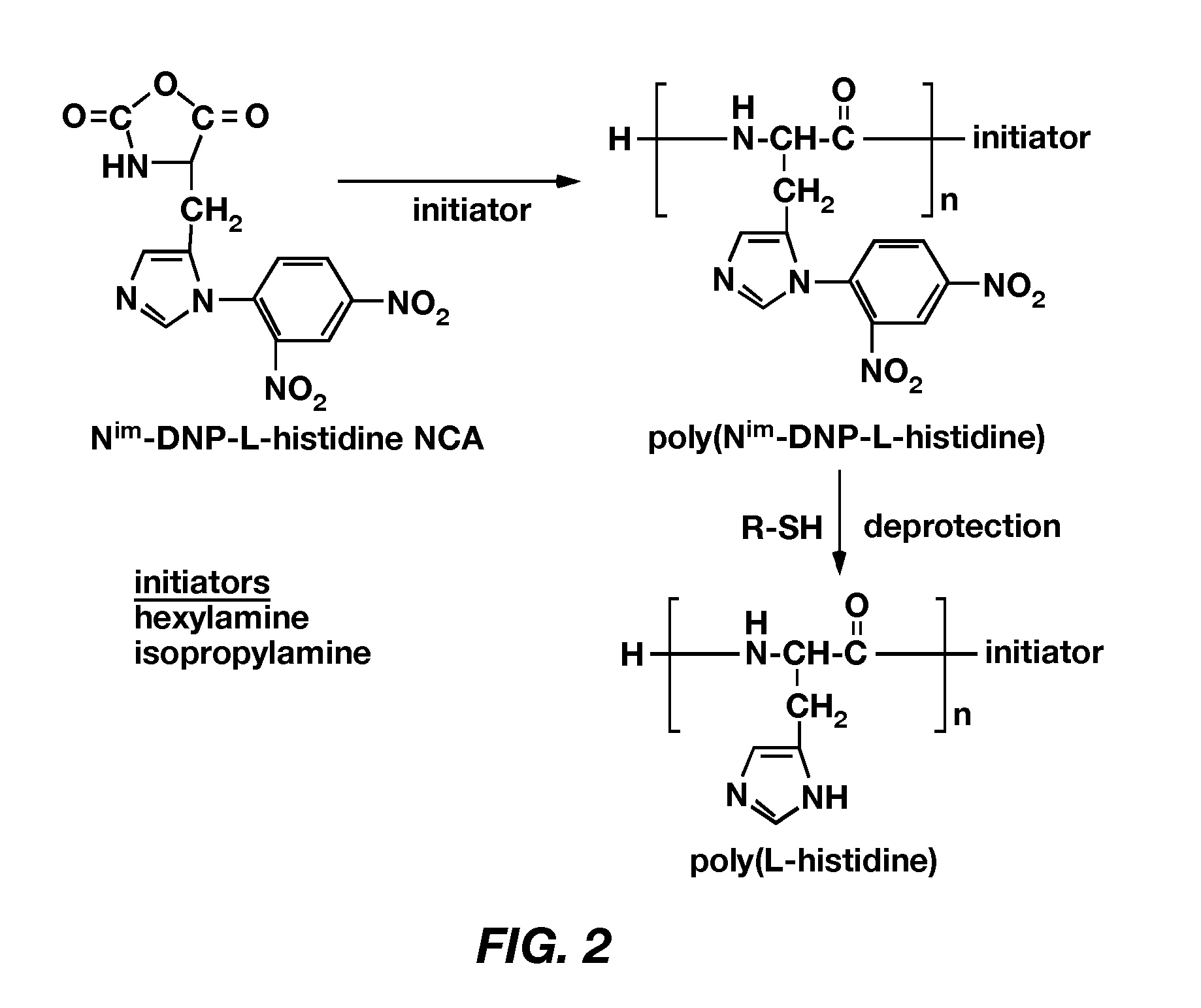Ph-sensitive polymeric micelles for drug delivery
a polymer micelle, ph-sensitive technology, applied in the field of drug delivery, to achieve the effect of maintaining stability in the blood
- Summary
- Abstract
- Description
- Claims
- Application Information
AI Technical Summary
Problems solved by technology
Method used
Image
Examples
examples 1-9
[0094]Examples 1-9 describe a method of making poly(L-histidine) (“polyHis”) by ring-opening polymerization of L-histidine N-carboxyanhydride, the imidazole amine group of which was protected by a dinitrophenyl group. The synthesis of Nim-DNP-L-histidine NCA from L-histidine is summarized in FIG. 1, and the synthesis of polyHis from Nim-DNP-L-histidine NCA is summarized in FIG. 2. The resulting polyHis polymer (MW: 5,000 g / mole) was coupled to poly(ethylene glycol) (MW: 2,000 g / mole) via an amide linkage using the N,N′-dicyclohexyl carbodiimide (DCC) and N-hydroxysuccinimide (NHS)-mediated reaction. Poly(L-histidine)-poly(ethylene glycol) diblock copolymers (polyHis-b-PEG) were prepared and used for the construction of polymeric micelles responding to local pH changes in the body. The block copolymer in dimethylsulfoxide (DMSO) formed polymeric micelles on diafiltration against a borate buffer at pH 8. Dynamic light scattering (DLS) and atomic force microscopy (AFM) showed the micel...
example 1
Synthesis of Nα-CBZ-L-histidine
[0095]L-Histidine monohydrochloride monohydrate (Sigma Chemical Co., Inc., St. Louis, Mo.) was purified by recrystallization from water / ethanol (7 / 3 v / v) at 0° C. The purified L-histidine monohydrochloride monohydrate (15 g) in ammonia water (28 wt %, 100 mL) was cooled to 0° C. Benzyl chloroformate (15 mL; Aldrich Chemical Co., Inc., Milwaukee, Wis.) was added dropwise to the solution while stirring continuously, which resulted in a white suspension. Stirring was continued for 1 h, followed by addition of an excess amount of diethyl ether (J. T. Baker, Deventer, Netherlands) to the reaction mixture and mixing for more 3 h. The impurities (excess benzyl chloroformate and by-products) were extracted twice with diethyl ether. Ammonia was removed from the aqueous phase, and the volume was increased to 100 ml with deionized water. After filtering, the filtrate was acidified by adding dilute sulfuric acid slowly with stirring until precipitation began. The ...
example 2
Synthesis of Nα-CBZ-Nim-DNP-L-histidine
[0096]A solution of Nα-CBZ-L-histidine (7 g), prepared according to the procedure of Example 1, in distilled water (100 mL) containing sodium bicarbonate (8.4 g, to delay the reaction of 2,4-dinitrofluorobenzene with water; Sigma Chemical) and 0.5 M sodium hydroxide (NaOH, an activation agent) was cooled to 0° C. and 2,4-dinitrofluorobenzene (5 mL; Aldrich Chemical) in 1,4-dioxane (50 mL) was added. The reaction mixture was vigorously stirred at 0° C. for 8 h, then acidified with 3 N HCl aqueous solution to precipitate the product. The precipitate was filtered, washed with a small quantity of water and then with ethanol. After dissolving Nα-CBZ-Nim-DNP-L-histidine in tetrahydrofuran (THF; Sigma Chemical), a 2-fold excess of petroleum ether (J. T. Baker) was added with stirring to reprecipitate Nα-CBZ-Nim-DNP-L-histidine. The suspension was left undisturbed at 0° C. for one day, followed by filtration. This process was repeated. The final produc...
PUM
| Property | Measurement | Unit |
|---|---|---|
| pH | aaaaa | aaaaa |
| pH | aaaaa | aaaaa |
| pH | aaaaa | aaaaa |
Abstract
Description
Claims
Application Information
 Login to View More
Login to View More - R&D
- Intellectual Property
- Life Sciences
- Materials
- Tech Scout
- Unparalleled Data Quality
- Higher Quality Content
- 60% Fewer Hallucinations
Browse by: Latest US Patents, China's latest patents, Technical Efficacy Thesaurus, Application Domain, Technology Topic, Popular Technical Reports.
© 2025 PatSnap. All rights reserved.Legal|Privacy policy|Modern Slavery Act Transparency Statement|Sitemap|About US| Contact US: help@patsnap.com



